Related Research Articles

Duke of Bedford is a title that has been created six times in the Peerage of England. The first and second creations came in 1414 and 1433 respectively, in favour of Henry IV's third son, John, who later served as regent of France. He was made Earl of Kendal at the same time and was made Earl of Richmond later the same year. The titles became extinct on his death in 1435. The third creation came in 1470 in favour of George Neville, nephew of Warwick the Kingmaker. He was deprived of the title by Act of Parliament in 1478. The fourth creation came 1478 in favour of George, the third son of Edward IV. He died the following year at the age of two. The fifth creation came in 1485 in favour of Jasper Tudor, half-brother of Henry VI and uncle of Henry VII. He had already been created Earl of Pembroke in 1452. However, as he was a Lancastrian, his title was forfeited between 1461 and 1485 during the predominance of the House of York. He regained the earldom in 1485 when his nephew Henry VII came to the throne and was elevated to the dukedom the same year. He had no legitimate children and the titles became extinct on his death in 1495.
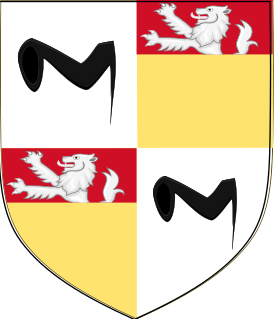
Earl of Loudoun, named after Loudoun in Ayrshire, is a title in the Peerage of Scotland. It was created in 1633 for John Campbell, 2nd Lord Campbell of Loudoun, along with the subsidiary title Lord Tarrinzean and Mauchline. The 1st Earl's wife Margaret was the granddaughter and heiress of Hugh Campbell, who had been created Lord Campbell of Loudoun; he resigned the peerage in favour of his grandson-in-law, who was later created an earl.

Earl of Huntingdon is a title which has been created several times in the Peerage of England. The medieval title was associated with the ruling house of Scotland.

Baron Hastings is a title that has been created three times. The first creation was in the Peerage of England in 1290, and is extant. The second creation was in the Peerage of England in 1299, and became extinct on the death of the first holder in c. 1314. The third creation was in the Peerage of England in 1461, and has been in abeyance since 1960.
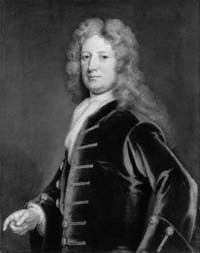
Baron Wharton is a title in the Peerage of England, originally granted by letters patent to the heirs male of the 1st Baron, which was forfeited in 1729 when the last male-line heir was declared an outlaw. The Barony was erroneously revived in 1916 by writ of summons, thanks to an 1844 decision in the House of Lords based on absence of documentation. As such, the current Barony of Wharton could more accurately be listed as a new Barony, created in 1916, with the precedence of the older Barony.

Earl of Granard is a title in the Peerage of Ireland. It was created in 1684 for Arthur Forbes, 1st Viscount Granard. He was a lieutenant-general in the army and served as Marshal of the Army in Ireland after the Restoration and was later Lord Justice of Ireland. He had already succeeded his father as second Baronet of Castle Forbes and been created Baron Clanehugh and Viscount Granard in 1675, also in the Peerage of Ireland. The Baronetcy, of Castle Forbes in county Longford, was created in the Baronetage of Nova Scotia on 29 September 1628 for his father, Arthur Forbes.

Baron Hungerford is a title in the Peerage of England. It was created on 7 January 1426 for Walter Hungerford, who was summoned to parliament, had been Member of Parliament, Speaker of the House and invested as Knight of the Order of the Garter before and was made Lord High Treasurer one year before he became a peer. The man who would later succeed as third baron was created Baron de Moleyns on 13 January 1445 by writ of summons; both titles merged when he succeeded as Baron Hungerford in 1459. The third baron was attainted and the peerage forfeit in 1461. This attainder was reversed in 1485 for the then 4th baroness of Hungerford, and so it came into the Hastings family of Earls of Huntingdon until 1789, when it came into the Rawdon(-Hastings) family of the Marquesses of Hastings until 1868 when it fell into abeyance. This abeyance was terminated three years later for a member of the Abney-Hastings family and an Earl of Loudoun. In 1920 it again fell into abeyance, which was terminated one year later for the Philipps family of the Viscounts of St Davids where it has remained since.
The title of Baron Welles has been created thrice. It was first created for Adam de Welles on 6 May 1299 in the Peerage of England by writ of summons. This creation was extinguished by attainder in 1469. It was created a second time in the Peerage of England by writ of summons for Sir Richard Hastings on 15 November 1482 and became extinct on his death. The third creation was on 8 January 1781, in the Peerage of Ireland, for Thomas Knox, later Viscount Northland. It is now a subsidiary title of the Earl of Ranfurly.

John Beaumont, 4th Baron Beaumont KG (1361–1396) was an English military commander and Admiral who served in the Hundred Years' War against the partisans of Pope Clement VII.
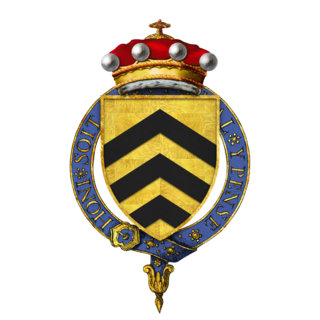
Walter Manny,, 1st Baron Manny, KG, soldier of fortune and founder of the Charterhouse, was from Masny in Hainault, from whose counts he claimed descent. He was a patron and friend of Froissart, in whose chronicles his exploits have a conspicuous and probably an exaggerated place.
John Hastings, 3rd Earl of Pembroke was the son of John Hastings, 2nd Earl of Pembroke and Anne Manny, 2nd Baroness Manny. He was also Baron Abergavenny.

Baron Tibetot is an abeyant title in the Peerage of England. It was created on 10 March 1308 as a barony by writ. It fell into abeyance in 1372. These were the immediate descendants of the crusader Sir Robert de Tiptoft and his wife Eva de Chaworth, early benefactors of the house of Ipswich Greyfriars.
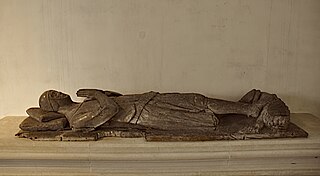
John Hastings, 2nd Baron Hastings was a medieval English Baron.
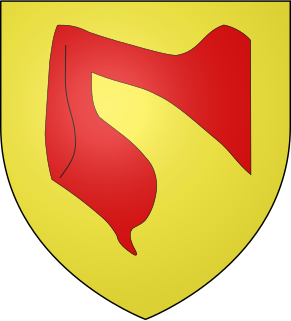
John Hastings, 1st Baron Hastings, feudal Lord of Abergavenny, was an English peer and soldier. He was one of the Competitors for the Crown of Scotland in 1290/92 in the Great Cause and signed and sealed the Barons' Letter of 1301.
John Hastings may refer to:

Edmund Stafford was Bishop of Exeter from 1395 to his death in 1419.

Jacob Astley, 16th Baron Hastings, known as Sir Jacob Astley, Bt, between 1817 and 1841, was a British peer and Whig politician.
Manny is a masculine nickname or given name.

Roger de Clifford, 5th Baron de Clifford, ninth Lord Clifford, fifth Baron of Westmoreland, was the son of Robert de Clifford, 3rd Baron de Clifford, second son of Robert de Clifford, 1st Baron de Clifford (1273–1314), the founder of the northern branch of the family. His mother was Isabella, daughter of Maurice, 2nd Lord Berkeley. He succeeded his elder brother, Robert de Clifford, 4th Baron de Clifford in 1350, on which day he made proof of his age.

The Admiral of the North also known as Admiral of the Northern Seas and Admiral of the Northern Fleet was a senior English Navy appointment. The post holder was chiefly responsible for the command of the navy's fleet that operated in the North Sea and off the English coast out of Yarmouth from 1294 to 1412.